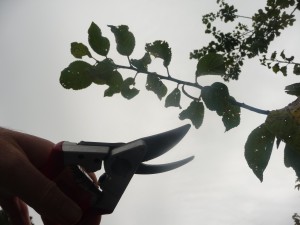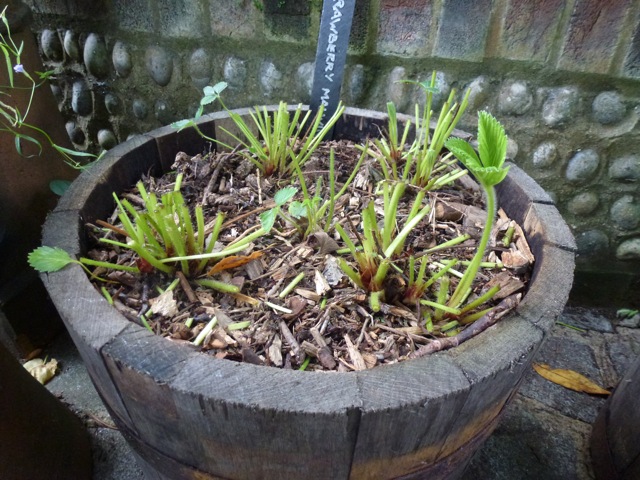-

Why Summer Pruning is a Good Idea
There’s a tendency to view summer pruning as a mysterious art carried out by the experts, while the rest of us stick to winter pruning. Actually, summer pruning isn’t risky and sometimes it really is a better option than winter pruning. One of the main difference between the two techniques is that pruning in winter stimulates growth; pruning in summer checks it. Another important difference is that it is the ONLY TIME to prune members of the prunus family – plums, almonds, apricots, nectarines,peaches, gages etc to minimise the risk of silver leaf infection. Silver leaf is a fungal disease and its wind-borne spores are released from late autumn through to spring when they can enter fresh pruning cuts.
Maybe it’s all the foliage that is off-putting when it comes to summer pruning, it is all so much easier in the winter when you can see exactly what you are doing. Besides which, there’s a fear that cutting back new growth will also be cutting away next year’s fruit or flowers. Worry not, what you are cutting away is the over-vigorous growth that is crowding the tree and using energy that is better directed to the fruiting buds. This is especially true of trained fruit trees such as cordons, espaliers and step-overs. Left to their own devices in summer they will quickly turn into unruly mop-tops and all the early training will be lost in a forest of foliage. From their second year of planting, late summer is when all trained fruit trees should have their main pruning. Summer pruning will also restrict the growth and help shape other fruiting and ornamental trees.
Soft fruit can also be summer pruned. Cut any damaged wood from blackcurrants straight after fruiting and keep prickly gooseberries under control by removing crossing or damaged branches. By summer pruning red and white currants, extra light and air will reach the fruit and speed the ripening process.
In the ornamental garden it’s the early flowering shrubs that should be pruned immediately after flowering. Philadelphus, kolkwitzia, deutzia and Kerria japonica should all be treated this way. To keep the shrub shapely, cut out a third of the old brown wood close to the ground – this will encourage new flowering shoots and then trim away any over-exuberant growth. Where a shrub has got overlarge and leggy it can be hard-pruned to within 20cm of the ground. When taking this drastic action give the plant a thorough soaking, fork some bonemeal into the soil and top with a moisture retaining mulch.
Some plants are ‘bleeders’ and lose alarming amounts of sap if pruned in late winter or early spring. Birches and maples fall in to this category and are best pruned in summer. Similarly, grapevines, which must be given their main pruning before the end of January to avoid bleeding, should have the vigorous new lateral growths left untrimmed until mid-summer.
So, get out there with your secateurs and get to grips with summer pruning, it really isn’t rocket science and your garden will look all the better for it.












